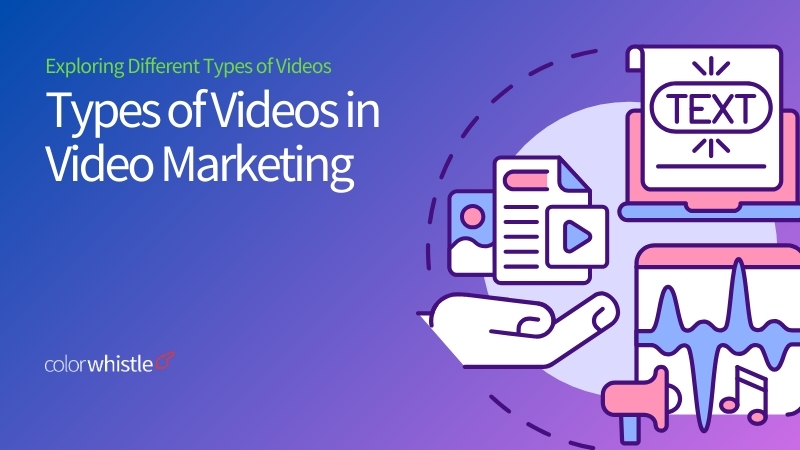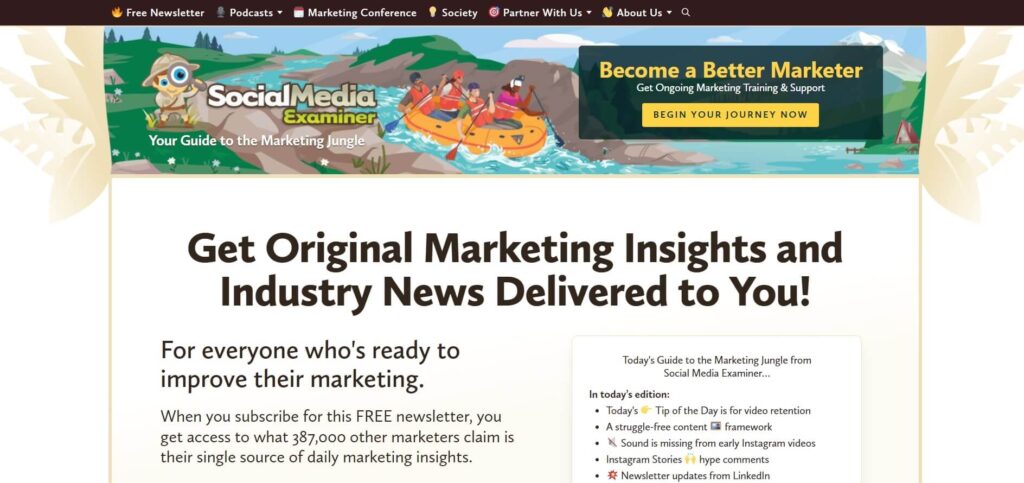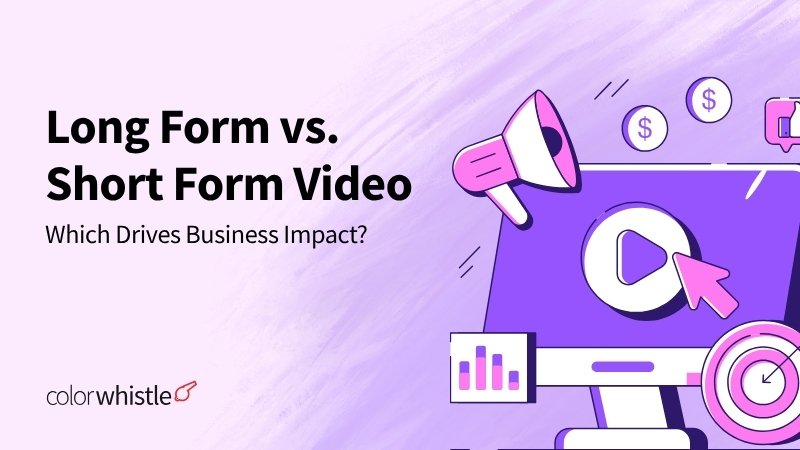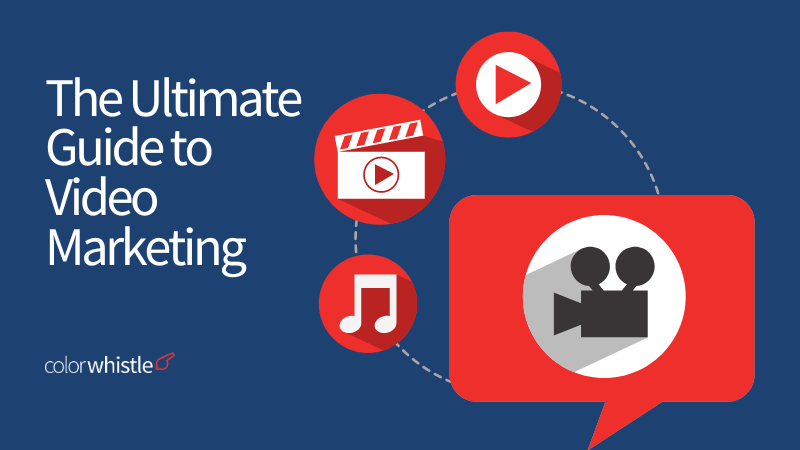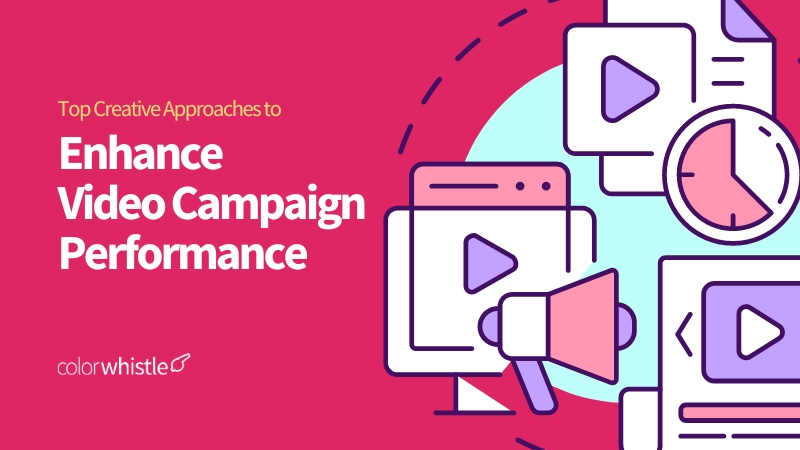In today’s digital world, video has become an essential marketing tool that fuels growth and engagement. As people’s attention spans shorten and consumers crave immersive experiences, videos have become a necessity for capturing people’s hearts and minds. Statistics reveal that businesses utilizing video content witness an increase in website traffic, conversion rates, and brand recall.
Different types of videos serve different purposes in engaging viewers and encouraging them to take action. For example, explainer videos help simplify complicated concepts, while product demos highlight a product’s or service’s advantages in real-life scenarios. Leveraging a professional video marketing agency is key to strategically using different video types to captivate your audience.
Different Types of Videos in Video Marketing
Explore the different types of videos from explainer videos to product demos with us, as we reveal their effectiveness in engaging audiences and driving conversions.
Explainer Videos
Explainer videos are short, engaging videos designed to explain a business idea, product, or service simply and compellingly. They aim to educate the audience about a specific concept or offering, often using clear and concise language and appealing visuals to make complex information understandable.
Did You Know?
Landing pages with explainer videos convert 86% better.
Examples of Successful Explainer Videos
- Dropbox’s explainer video simplifying their cloud storage service
- Dollar Shave Club’s humorous and informative video introducing their subscription model
Tips for Creating Effective Explainer Videos
- Keep it short and focused
- Use engaging visuals and clear, concise language
- Address the viewer’s problem and explain how your product or service solves it
- End with a strong call to action to prompt the viewer to take the next step
When it comes to creating effective explainer videos, finding the right balance between providing information and entertaining your audience is crucial. This will help leave a lasting impact on your viewers.
Product Demo Videos
Product demos play a crucial role in showcasing the features and benefits of a product, offering a visual and practical understanding of how it works and how it can add value to the user’s life.
Different Approaches to Creating Product Demo videos
- Live-action: Utilizes real people and physical products to demonstrate usage.
- Animated: Uses animation to illustrate the product’s functionality in a creative and visually appealing way.
- Screencasts: Showcases the product in action through screen recordings, ideal for software or digital products.
Examples of Product Demo Videos
- Headspace is a meditation app that promotes inner peace, with a product demo featuring entertaining characters to effectively explain the concept.
- Apple’s enthusiastic product demos, featuring rapid editing and dynamic soundtracks, have gained a strong following.
Best Practices for Crafting Compelling Product Demo Videos
- Focus on highlighting key features and benefits
- Keep it concise and engaging
- Use a problem-solution approach to demonstrate how the product addresses a specific need
- Incorporate clear calls to action for further engagement or purchase consideration
Did You Know?
89% of people, as reported by Wyzowl, state that watching a video has convinced them to purchase a product or service.
Creating an engaging product demo requires clearly explaining the product’s benefits and addressing the audience’s needs with a visually appealing and educational pitch.
Also Read
Testimonials and Case Study Videos
Testimonials and case studies are effective ways to establish trust and credibility. They demonstrate real-life success stories and customers’ experiences gained from a product or service.
Utilizing Customer Testimonials and Showcasing Real-life Success Stories
- Building Trust: Testimonials show that others trust the product or service, making potential customers feel more confident.
- Credibility: Showing the genuine experiences of happy customers helps build trust and credibility.
- Case Study Videos: The videos go into more detail about the customer’s journey, explaining the difficulties they encountered, the solution offered, and the successful results obtained.
Did You Know?
2 out of 3 people would be more likely to buy something after seeing a video testimonial from a previous customer.
Techniques for Capturing Authentic Testimonials and Case Study Videos
- Interview Format: Conduct real and spontaneous interviews with happy customers to record their genuine experiences.
- Focus on Emotions: Bring attention to the significant emotional influence the product or service can have on the customer’s life or business.
- Visual Evidence: Use visuals, like comparing before and after situations, to enhance credibility and make a stronger impression.
Examples of Testimonials and Case Studies Videos
- Slack’s customer testimonial videos, featuring interviews with multiple users, have consistently inspired us with their quirky approach to highlighting the advantages of their product.
- The accounting software company utilized a practical approach by selecting a customer to share their experience, allowing them to focus on their core business.
Incorporating genuine testimonials and case studies in video presentations can greatly improve a brand’s trustworthiness and impact on potential customers by showcasing the concrete advantages and successful outcomes others achieve.
Also Read
How-To and Tutorial Videos
Meeting audience needs is made possible through the use of how-to and tutorial videos. These videos provide valuable information, guidance, and practical knowledge through step-by-step demonstrations, empowering viewers.
Meeting Audience Needs
- Value and Guidance: How-to and tutorial videos focus on addressing particular challenges and offering solutions, showcasing the brand as a valuable resource for its audience.
- Education and Empowerment: They provide viewers with the necessary knowledge and skills to achieve tasks or learn new abilities.
Creating Step-by-Step Tutorial Videos
- Clear and Concise: Transform complex procedures into easily understandable tasks by breaking them down into simple, step-by-step instructions.
- Visual Demonstrations: Enhance your understanding by using visuals like screen recordings for software tutorials or practical demonstrations for DIY projects.
Examples of How-To Tutorial Videos
- Tasty’s cooking tutorial video provides a step-by-step guide to creating beautiful cakes, accompanied by visuals and helpful tips.
- Dropbox utilized a video tutorial to quickly explain a product function, focusing on simplicity and understanding the audience’s intent.
Strategies for Optimizing How-To Videos
- Engaging Introductions: Grab the audience’s interest right away with engaging openings.
- Visual Clarity: Make sure the images are sharp and simple to understand, by zooming in or highlighting key points.
- Call to Action: Inspire your audience to put their knowledge into action or delve deeper into related content, improving their engagement and ability to retain information.
Brands can position themselves as experts in their industries by making informative and interesting how-to and tutorial videos that educate, empower, and connect with their viewers.
Behind-the-Scenes Videos
Behind-the-scenes videos are a type of content that offers viewers a backstage look at the making of a production, whether it’s a movie, a TV show, a music video, or even a corporate event. These videos provide glimpses into the behind-the-scenes activities, showcasing the intricate processes, the people involved, and the effort that goes into creating the final product.
Different Types Of Behind-the-scene Videos
- Offering Glimpses: Providing insights into company culture and operations, offering a transparent view of how things work behind the scenes.
- Humanizing the Brand: Portraying the human side of the brand, showcasing the people and processes that drive the company, fostering relatability and trust.
- Fostering Connection: Creating a deeper connection with the audience by offering an authentic and personal perspective.
Did You Know?
According to Forbes, 53% of customers say they are likely to buy from brands that are transparent on social media.
Ideas for Showcasing Behind-the-Scenes Content Creatively
- Day-in-the-Life: Follow a team member through a typical workday, offering insights into their tasks and interactions.
- Product Development Sneak Peeks: Share the journey of developing a product or service, from concept to completion.
- Office Culture and Events: Showcasing company events, celebrations, or the office environment to provide a sense of the company’s culture.
Examples of Behind-the-Scenes Videos
- Starbucks shares the process of creating new beverages or the stories behind them, providing insights into their operations and culture.
- Nike frequently releases behind-the-scenes videos showcasing their sneakers and sportswear design process, detailing inspiration, materials, and technological innovations.
Behind-the-scenes videos offer a unique and engaging way to connect with audiences, humanize the brand, and provide a deeper understanding of a company’s culture and operations.
Also Read
Animated Videos
Animated videos bring characters, stories, and concepts to life through animation. They are created using a series of frames or images that change slightly to give the impression of movement when played quickly. Animated videos offer several advantages in simplifying complex concepts, including
- Clarity: Engaging visuals can simplify complex ideas, making it easier for audiences to comprehend and remember the information presented.
- Creativity: Animation is a powerful way to tell stories and present ideas in a visually engaging manner. It is particularly effective for conveying abstract or challenging concepts in a way that is easy to grasp.
- Universal Appeal: Animated videos can be customized to fit different viewers and demographics, crossing language and cultural boundaries.
Did You Know?
The use of animation in advertising is growing at an annual rate of 7%, projected to generate revenues of over $40 billion by 2025
Animation Styles and Suitability
Different animation styles serve different purposes, such as:
- 2D Animation: Perfect for sharing stories and educational content, making it great for narratives and character-driven tales.
- 3D Animation: Ideal for displaying products, architectural designs, and making immersive visual experiences.
- Motion Graphics: It is an effective way to present data, statistics, and complex information in a visually engaging and easily understandable format.
Tools and Resources
To make professional animated videos, you can utilize a variety of tools and resources, including Adobe After Effects, Toon Boom Harmony, and Blender or an AI animation generator free of cost. Online platforms like Vyond and Powtoon also offer user-friendly interfaces for creating animated content.
Examples of Animated Videos
- Microsoft’s animated marketing video showcases users’ daily life challenges and how to eliminate multiple steps with their suite app, using eye-pleasing 3D animation and playful BGM.
Different Video Types in Making Animated Videos
- Explainer Videos: Animated explainer videos are commonly used to introduce products or services, effectively conveying their value propositions in a brief and captivating way.
- Whiteboard Animations: Viewers are captivated by the hand-drawn illustrations in these videos that explain concepts, processes, or stories.
- Product Demonstrations: Companies use animated videos to present the features and benefits of products in an eye-catching way, making them more appealing to potential customers.
By using animated videos, you can effectively communicate complex information, engage your audience, and leave a lasting impression.
Live Streaming and Webinar Videos
With live-streaming videos and webinar videos, educational seminars or workshops can be conducted in real time with interactive features. Creators can utilize these powerful tools to share their knowledge and expertise with their audience. Live streaming and webinars offer multiple advantages for engaging with the audience and promoting educational outreach.
- Real-Time Engagement: Through live streaming, you can engage with your audience directly and receive immediate feedback.
- Educational Outreach: Webinars are a great platform for educating audiences, sharing knowledge, and generating leads with informative content.
Examples of Live Videos and Webinars
- Social Media Examiner – Experts in the social media marketing industry have made webinars popular by sharing their experiences, including their mistakes, experiments, and successes. They provide practical marketing strategies that have been successfully implemented in various businesses, helping them to grow.
- Microsoft – To reach a wider audience, Microsoft live streams their product announcements. They also broadcast software releases and updates to keep everyone updated. Their exclusive events, like video game releases for XBOX, are very popular and attract many viewers. This helps to increase Microsoft’s brand awareness.
Did You Know?
63% of those aged between 18 and 34 have watched live videos.
Tips for Planning and Execution of Live-streaming and Webinar Videos
To ensure successful live-streaming events and webinars, consider the following tips:
- Technical Preparation: Make sure to test your equipment, internet connection, and streaming platforms beforehand to prevent any technical problems during the event.
- Engaging Content: Include engaging features like live polls, Q&A sessions, and discussions to hold the audience’s attention.
- Promotion and Preparation: Effectively advertise the event and gather appropriate materials and resources to improve the participants’ experience.
Live streaming and webinars offer dynamic opportunities for real-time engagement, education, and lead generation, providing a platform for direct interaction with audiences and the dissemination of valuable content.
Final Thoughts
To sum up, the various video types we talked about show how flexible visual content is in the digital world. Whether it’s animated videos, live streaming, or webinars, each type has its advantages for connecting with viewers and delivering messages effectively. Businesses must select the right type that aligns with their marketing goals and target audience to ensure their video content is impactful.
It is highly recommended for businesses to include different video types in their video marketing strategies. This will help increase brand visibility, engage more people, and boost conversion rates. By offering diverse video content, companies can cater to different consumer preferences, reach a wider audience, and establish a stronger presence in the competitive digital marketplace.
Feel free to drop by our ColorWhistle page, where you can uncover the full scoop on our top-notch video marketing services. If you need expert assistance in crafting videos for your business connect with us by simply navigating to our ColorWhistle page. Send a message or give us a call at +1 (919) 234-5140, and we’ll promptly respond to your inquiry.
What’s Next?
Now that you’ve had the chance to explore our blog, it’s time to take the next step and see what opportunities await!

